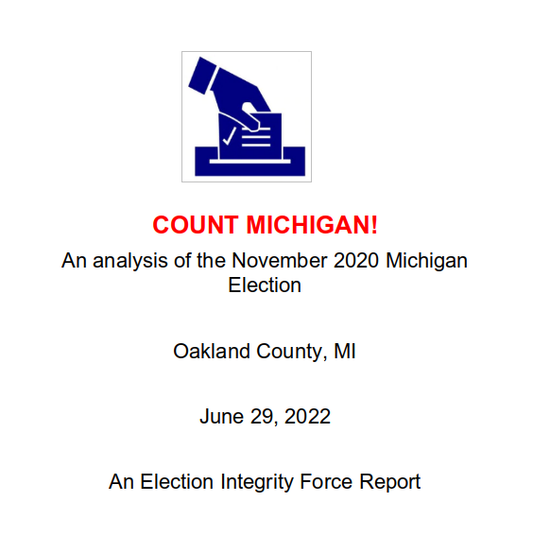News
Reported versus an Audit: A Tale of Missing Vot...
In the last report, we highlighted that the SOS cannot produce a list of voters from the 2020 election. As we dig deeper into the recorded votes of the 2020...
Reported versus an Audit: A Tale of Missing Vot...
In the last report, we highlighted that the SOS cannot produce a list of voters from the 2020 election. As we dig deeper into the recorded votes of the 2020...

Reported Versus Recorded: A Tale of Missing Voters
According to Michigan SOS Benson, in her testimony on May 12th, 2021, “The 2020 election was the most safe, secure and accessible in our state’s history. This truth was affirmed...
Reported Versus Recorded: A Tale of Missing Voters
According to Michigan SOS Benson, in her testimony on May 12th, 2021, “The 2020 election was the most safe, secure and accessible in our state’s history. This truth was affirmed...

Report 7: The Egregious State of Voter Registra...
Let’s be blunt. Michigan has a voter over-registration problem. If we do not correct the voter over-registration problem we put our 2022 election – and future elections - at risk....
Report 7: The Egregious State of Voter Registra...
Let’s be blunt. Michigan has a voter over-registration problem. If we do not correct the voter over-registration problem we put our 2022 election – and future elections - at risk....

Was There Election Fraud In Michigan? Patrick B...
Discussions on election fraud related to the Michigan November 2020 Election, investigation and analysis of official election data in Michigan performed by the Election Integrity Force, and other election integrity...
Was There Election Fraud In Michigan? Patrick B...
Discussions on election fraud related to the Michigan November 2020 Election, investigation and analysis of official election data in Michigan performed by the Election Integrity Force, and other election integrity...

Statewide Ballot Challenge Initiative
NEWS UPDATE On Friday, July 29, Election Integrity Force launched its first ever statewide ballot challenge initiative. Our team analyzed a recent August primary Absentee Ballot Daily report against National...
Statewide Ballot Challenge Initiative
NEWS UPDATE On Friday, July 29, Election Integrity Force launched its first ever statewide ballot challenge initiative. Our team analyzed a recent August primary Absentee Ballot Daily report against National...

EIF 2020 Critical Analysis Report 6: Oakland Co...
As our Data Heros dug deep into the Oakland County, Michigan, Qualified Voter File, a disturbing number of inaccuracies became evident. Here is EIF's Report 6 that shines the light on...
EIF 2020 Critical Analysis Report 6: Oakland Co...
As our Data Heros dug deep into the Oakland County, Michigan, Qualified Voter File, a disturbing number of inaccuracies became evident. Here is EIF's Report 6 that shines the light on...
